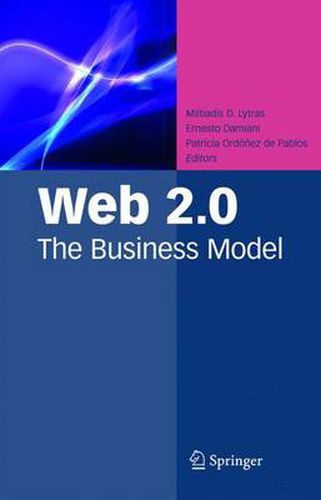Readings Newsletter
Become a Readings Member to make your shopping experience even easier.
Sign in or sign up for free!
You’re not far away from qualifying for FREE standard shipping within Australia
You’ve qualified for FREE standard shipping within Australia
The cart is loading…






This title is printed to order. This book may have been self-published. If so, we cannot guarantee the quality of the content. In the main most books will have gone through the editing process however some may not. We therefore suggest that you be aware of this before ordering this book. If in doubt check either the author or publisher’s details as we are unable to accept any returns unless they are faulty. Please contact us if you have any questions.
While the web itself is about twenty years old, businesses are still impleme- ing the technology into the fabric of the business model. The background section will focus on defining the building blocks for the framework including defining the basic components of Web 1. 0 which focused on the presence and business transaction. The Web 2. 0 section will focus on defining the basic building blocks of customer interactions, while the final section will focus on a review the wine industry. 2. 1 Web 1. 0: Presence and Electronic Commerce The term Web 1. 0 emerged from the research around the development of Web 2. 0. Prior to this, researchers commonly referred to Web 1. 0 as Electronic C- merce or E-Business. Where as, web 1. 0 focused on a read only web interface, Web 2. 0 focuses on a read-write interface where value emerges from the contri- tion of a large volume of users. The Internet initially focused on the command and control of the information itself. Information was controlled by a relative small number of resources but distributed to a large number which spawned the massive growth of the web itself. Like television before it, the web allowed for the broadcasting of information to a large number of users. Initial web sites were built simply to communicate presence or provide information on the business - self. This component includes information like marketing materials, investor re- tions, employment opportunities, and product information.
$9.00 standard shipping within Australia
FREE standard shipping within Australia for orders over $100.00
Express & International shipping calculated at checkout
This title is printed to order. This book may have been self-published. If so, we cannot guarantee the quality of the content. In the main most books will have gone through the editing process however some may not. We therefore suggest that you be aware of this before ordering this book. If in doubt check either the author or publisher’s details as we are unable to accept any returns unless they are faulty. Please contact us if you have any questions.
While the web itself is about twenty years old, businesses are still impleme- ing the technology into the fabric of the business model. The background section will focus on defining the building blocks for the framework including defining the basic components of Web 1. 0 which focused on the presence and business transaction. The Web 2. 0 section will focus on defining the basic building blocks of customer interactions, while the final section will focus on a review the wine industry. 2. 1 Web 1. 0: Presence and Electronic Commerce The term Web 1. 0 emerged from the research around the development of Web 2. 0. Prior to this, researchers commonly referred to Web 1. 0 as Electronic C- merce or E-Business. Where as, web 1. 0 focused on a read only web interface, Web 2. 0 focuses on a read-write interface where value emerges from the contri- tion of a large volume of users. The Internet initially focused on the command and control of the information itself. Information was controlled by a relative small number of resources but distributed to a large number which spawned the massive growth of the web itself. Like television before it, the web allowed for the broadcasting of information to a large number of users. Initial web sites were built simply to communicate presence or provide information on the business - self. This component includes information like marketing materials, investor re- tions, employment opportunities, and product information.